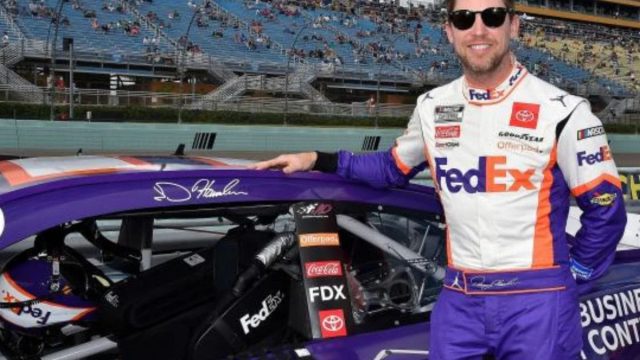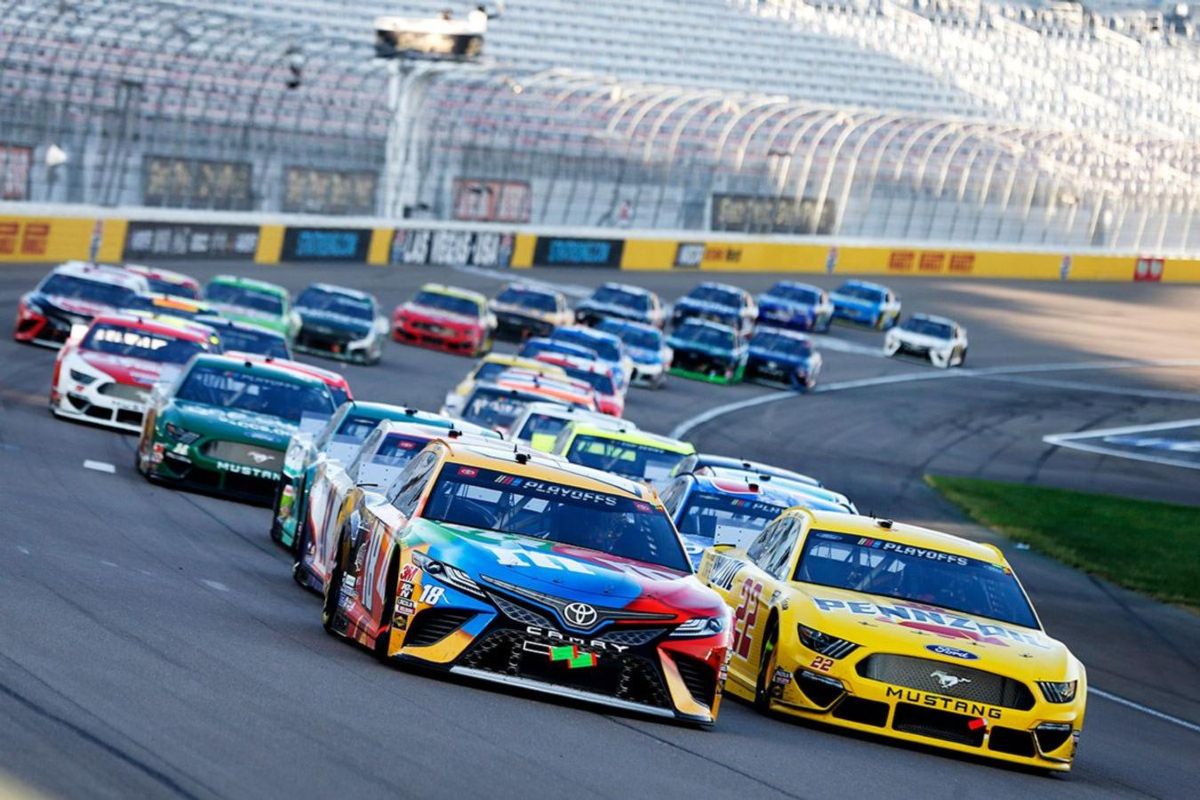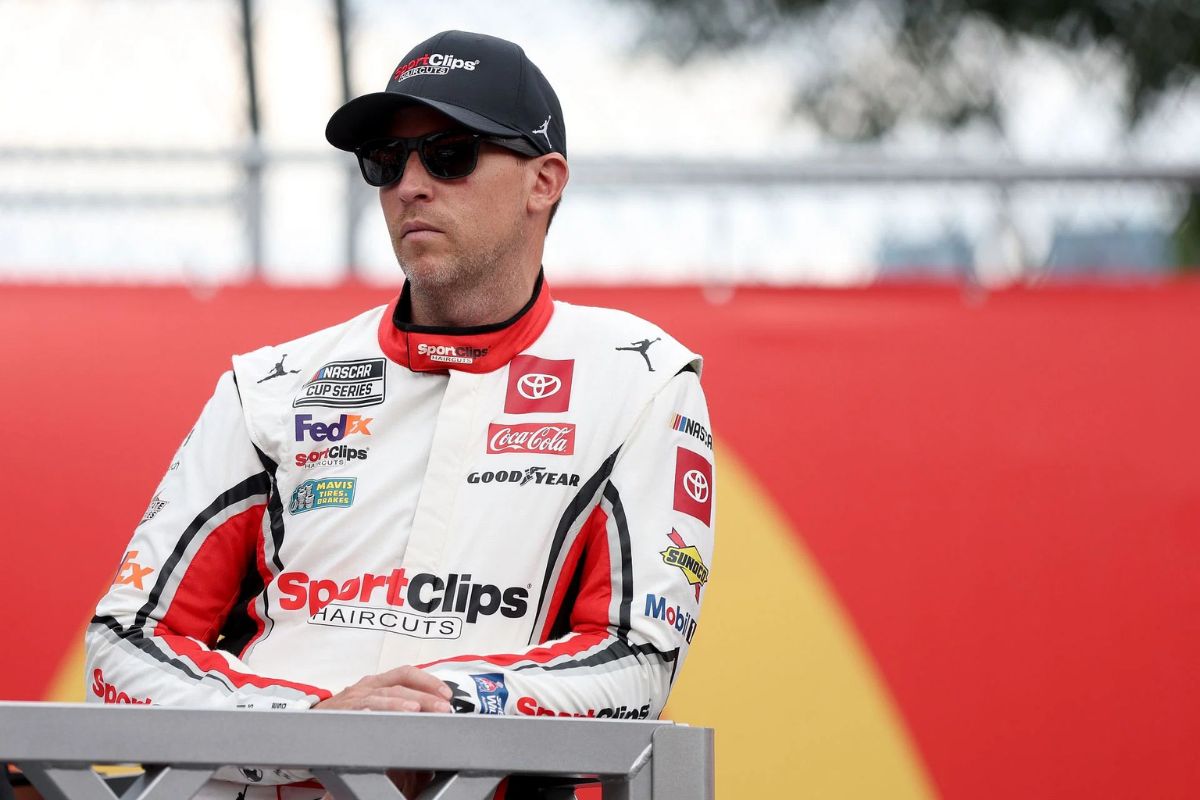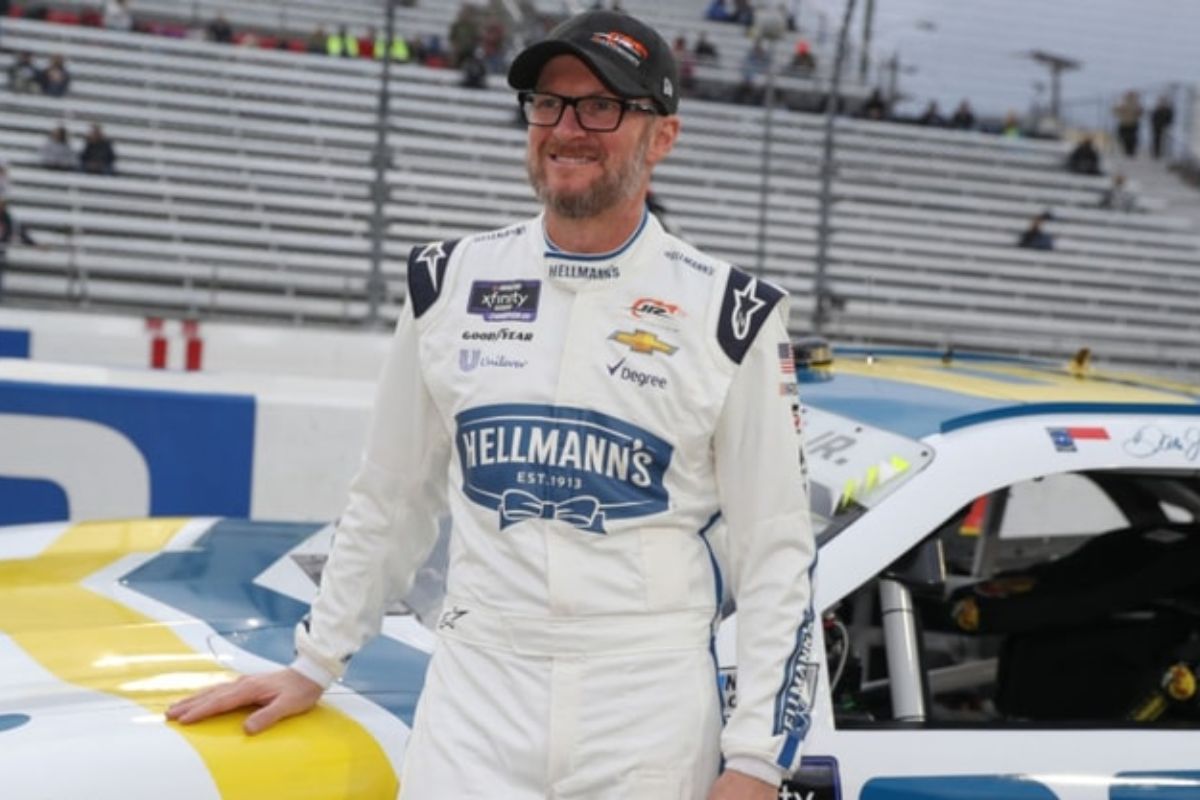Denny Hamlin Slams NASCAR’s Safety Failures: In response to recent incidents that have seen cars leaving the ground during races, Denny Hamlin‘s criticism of NASCAR’s safety protocols has sparked considerable dialogue within the motorsport community. His observations highlight the growing prevalence of aggressive driving tactics and the inadequacies of existing safety measures that seem ill-equipped to protect drivers in extreme situations. As the stakes continue to rise, one must consider whether NASCAR is prepared to confront these pressing safety concerns and what implications this might have for the future of the sport.
Key Highlights
- Denny Hamlin criticized NASCAR’s safety protocols, highlighting the inadequacy of current measures to protect drivers during high-speed races.
- Recent incidents, including Kyle Sieg’s and Corey LaJoie’s flips, shows the urgent need for improved safety equipment and vehicle design.
- A noticeable increase in aggressive driving tactics has led to more crashes, raising serious concerns about driver and crew safety in NASCAR.
- Hamlin argues that flipping can aid in energy dispersion during crashes, suggesting a need for a balanced approach to safety regulations.
- Dale Earnhardt Jr. echoed concerns about the ongoing risks of car flips, emphasizing the challenge of maintaining speed while ensuring driver safety.
The Chaos and Danger of Recent NASCAR Races
In recent NASCAR races, there has been an undeniable surge in chaos and danger as drivers push their limits in the final stretches of the season. The heightened intensity of competition, driven by the urgency to secure playoff spots or establish dominance as the regular season champion, has led to an escalation in aggressive driving tactics. This fervor, while contributing to the thrill of the sport, has resulted in a considerable increase in crashes that raises serious safety concerns.
Despite NASCAR’s ongoing commitment to improve safety through the development of the next-gen car, the inherent risks associated with high-speed racing remain. The most recent races have shown that even with advanced engineering and safety measures, the potential for catastrophic incidents is ever-present.
The chaotic nature of these events not only hampers the drivers but also places pit crews and spectators at risk. While crashes can electrify the viewing experience and create dramatic narratives, they clearly highlight the fine line NASCAR treads between entertainment and safety.
The implications of these incidents extend beyond immediate physical risks, as they can lead to psychological effects for both drivers and fans similarly. It is vital for NASCAR to continue refining safety protocols and technologies to mitigate these dangers.
Ensuring that thrills do not come at the expense of safety should be the foremost priority as the sport navigates the complexities of competition in the upcoming races.
Rising Concerns Over Airborne Cars
Concerns are mounting regarding the alarming frequency of airborne cars in recent NASCAR races, prompting a critical evaluation of the sport’s safety measures. In the past four events of the Cup Series and Xfinity Series combined, numerous instances of cars taking flight have raised notable questions about the effectiveness of current safety protocols.
Historically, airborne incidents have been closely monitored, and the sport has made strides in improving driver safety; however, the recent surge in these occurrences suggests that existing measures may not be sufficient.
Denny Hamlin, a seasoned veteran of the sport, has echoed sentiments similar to Dale Earnhardt’s perspective, positing that flipping during a race may not inherently equate to increased danger. This assertion, while grounded in personal experience, highlights a broader discourse about the evolving nature of risk in NASCAR racing.
The increasing frequency of airborne cars could indicate a need for urgent reassessment of vehicle design, track layout, and safety equipment.
As the sport continues to evolve, it is imperative that NASCAR take proactive steps to address these concerns. Improved crash barriers, refined vehicle aerodynamics, and enhanced driver safety gear may be necessary to mitigate the risks associated with airborne incidents.
Denny Hamlin on Recent Car Flips
Recent incidents of cars flipping during NASCAR races have sparked considerable discussion among drivers and analysts, with Denny Hamlin offering his insights on the matter. The phenomenon of cars becoming airborne is not new; however, recent events have amplified concerns regarding driver safety.
Particularly, the Cabo Wabo 250 witnessed Kyle Sieg’s No. 28 Ford flipping over after becoming involved in a multi-car pileup, sliding upside down across the track before colliding with the wall. This incident was particularly alarming because it exemplified how quickly a car can lose control and become airborne in high-speed scenarios.
Following this, Corey LaJoie’s frightening flip during the Cup Series race on the same Michigan track further intensified the scrutiny surrounding vehicle safety. Such incidents not only evoke fear among competitors but also emphasize the inherent risks associated with racing at such speeds.
Ride on board with Corey LaJoie as he flips at Michigan.#NASCAR | USA Network pic.twitter.com/kKTx0ugf72
— NASCAR on NBC (@NASCARonNBC) August 19, 2024
Hamlin’s commentary reflects an urgent need for NASCAR to reassess its safety protocols, especially in consideration of these recent flips. The implications of these flips extend beyond mere spectacle; they highlight critical deficiencies in vehicle design and track safety measures.
As racers push the limits of speed and skill, the potential for dangerous outcomes remains a pressing issue. Hamlin’s perspective serves to remind stakeholders that while the sport thrives on adrenaline, the safety of drivers must take precedence.
Denny Hamlin’s Perspective on Flipping
Denny Hamlin’s perspective on the phenomenon of flipping during NASCAR races offers a unique lens through which to view driver safety. In a recent episode of Actions Detrimental, Hamlin articulated a controversial stance, suggesting that flipping serves a vital role in energy dispersion during crashes. He pointed out that the act of flipping can mitigate the severity of impacts, as it decelerates the vehicle when it turns sideways and catches air, thereby reducing the force exerted on the driver upon collision with a barrier.
“There haven’t been many major injuries come from flipping. It’s you know you’re dispersing energy when you’re flipping um if you know if Josh Berry’s car does not flip over he hits the inside side wall harder. Why because when he flips over that is essentially slowing his car down as it’s as it’s turned to the side starts to flip over his car is slowing in speed if that car doesn’t and it just streamlines into the inside wall without a flip it’s going faster it hits the wall.” – Hamlin
Hamlin elaborated on this point by contrasting a flipping car with one that continues moving forward at high speed. He noted that if Josh Berry’s car had not flipped, the impact with the inside wall would have been notably harder due to the greater velocity at which it would collide. The mechanics of flipping, according to Hamlin, inherently slow the car’s momentum, which can ultimately result in fewer major injuries.
“Hey at least your tires would be on the ground so you’d be locking up your tires and slowing down that way but I just feel like when the car does turn sideways and catches air like that it’s I feel like it slows it down a lot okay…I don’t agree with slowing us down to where we’re going to just slow you down until these things don’t flip over anymore. I just they’ve been flipping over for decades man but I just feel like it’s not necessarily a totally bad thing.” – Hamlin
Moreover, he emphasized the importance of maintaining some degree of flipping in the sport, arguing against excessive regulations aimed at preventing this occurrence. He contended that flipping has been a part of NASCAR for decades, and while it may seem dangerous, it is not entirely detrimental.
Dale Earnhardt Jr.’s Blunt Response
Dale Earnhardt Jr.’s open assessment of NASCAR’s ongoing struggles with car flips highlights the complexities of safety in racing. His recent comments emphasize the inherent risks associated with speed, stressing that while modifications have been made to reduce the likelihood of flips, these changes have proven insufficient in practice.
The introduction of a new air deflector at Daytona, aimed at preventing flips, failed to address the core issue, illustrating the limitations of engineering solutions in a sport defined by velocity.
Earnhardt Jr.’s perspective raises significant considerations for the future of NASCAR safety:
- Historical Context: Flipping has been a recognized risk for over 45 years.
- Speed vs. Safety: Reducing car speeds could mitigate flips but would detract from the excitement of the sport.
- Engineering Limitations: Current modifications have not eliminated the risk.
- Driver Safety: Improvements in driver safety technology are vital but do not negate the danger of flips.
- Acceptance of Risk: Flips are an inevitable aspect of racing, and stakeholders must accept this reality.
In his straightforward tweets, Earnhardt Jr. encapsulated the sentiment that while advancements in safety are important, the element of danger cannot be entirely eradicated.
“It’s been an issue for over 45 years. If you wanna go fast you gonna have to realize the repercussions when it goes wrong.” – jr
His assertion that “you’ll never rid that particular element of danger” serves as a reminder that the thrill of NASCAR is intertwined with its inherent risks. As the sport evolves, finding a balance between speed and safety will remain an ongoing challenge for NASCAR.
News in Brief: Denny Hamlin Slams NASCAR’s Safety Failures
In view of Denny Hamlin’s criticisms regarding NASCAR’s safety protocols, it is essential for the organization to address the escalating risks associated with aggressive driving and airborne incidents. The urgency of reassessing safety standards is emphasized by the potential for severe consequences in high-speed racing environments. As incidents continue to reveal vulnerabilities, proactive measures must be implemented to improve driver safety and uphold the integrity of the sport. Immediate action is necessary to prevent further tragedies.
ALSO READ: Denny Hamlin Blames Corey LaJoie for Daytona Wreck: “7 Caused It” Sparks Controversy



